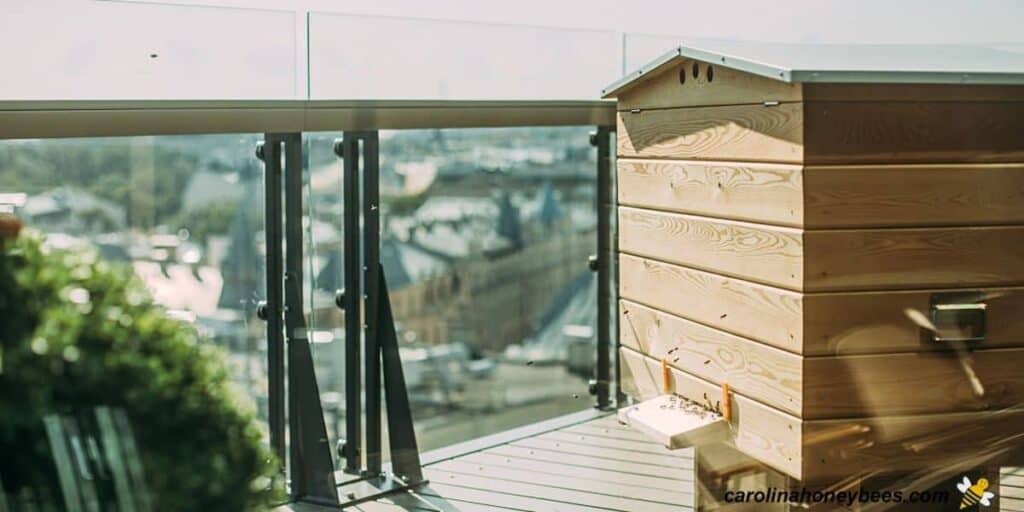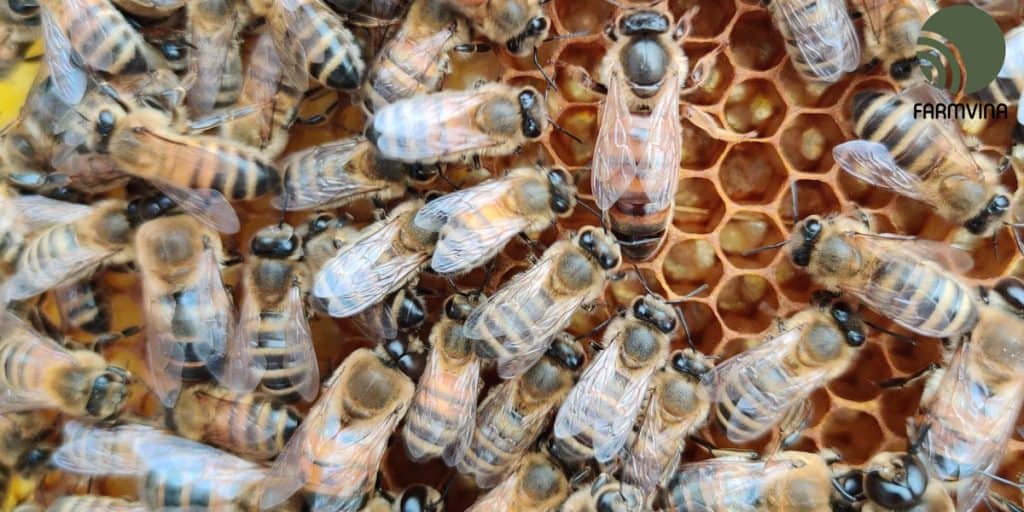Small Space, Big Rewards: The Benefits of Balcony Beekeeping and How to Get Started
Balcony beekeeping is a unique and rewarding hobby that allows individuals to keep bees and harvest their own honey right from the comfort of their own balcony. While traditional beekeeping may require large spaces and extensive equipment, balcony beekeeping offers a more accessible and manageable option for those with limited space.
Not only does balcony beekeeping provide the opportunity to produce your own honey, but it also contributes to sustainability efforts and helps with pollination.
The Benefits of Balcony Beekeeping: From Honey Production to Pollination
One of the main benefits of balcony beekeeping is the ability to produce your own honey. Honey produced from balcony beehives is often considered to be of higher quality compared to store-bought honey. This is because it is raw and unprocessed, retaining all of its natural enzymes, antioxidants, and nutrients. Raw honey has been shown to have numerous health benefits, including antibacterial properties, soothing effects on coughs and sore throats, and potential allergy relief.
In addition to honey production, balcony beekeeping also plays a crucial role in pollination. Bees are essential for the pollination of plants, which helps in the reproduction of flowers and the production of fruits and vegetables. By keeping bees on your balcony, you are contributing to the overall health of the environment and supporting local ecosystems. This is especially important in urban areas where green spaces may be limited.
How to Choose the Right Beekeeping Equipment for Your Balcony
When it comes to choosing beekeeping equipment for your balcony, there are a few key factors to consider. First, you will need to decide on the type of beehive you want to use.
There are several options available, including top-bar hives, Langstroth hives, and Warre hives. Each type has its own advantages and disadvantages, so it’s important to do your research and choose the one that best suits your needs and space constraints.
| Feature | Top-Bar Hive | Langstroth Hive | Warré Hive |
|---|---|---|---|
| Design | Horizontal, single box with top bars for comb attachment | Vertical stack of boxes with frames for comb building | Vertical stack of boxes with top bars for comb attachment |
| Inspection | Easy to inspect individual combs | Requires removal of frames from boxes for inspection | Minimal intervention, focus on overall hive health |
| Honey Harvest | Comb crushing or cutting required | Frames removed and honey extracted with a centrifuge | Top box harvested for honey |
| Management Style | More natural, less intervention | Traditional, hands-on management | Minimalist, mimics natural bee behavior |
| Expansion | Horizontal expansion by adding bars | Vertical expansion by adding boxes | Vertical expansion by adding boxes |
| Cost | Can be DIY or moderately priced | Moderately priced | Can be DIY or slightly less expensive than Langstroth |
| Suitability for Beginners | Good option | Popular choice, more resources available | Can be good if using a hands-off approach |
Next, you will need to invest in protective gear, such as a beekeeping suit, gloves, and a veil. This will help keep you safe while working with the bees. Additionally, you will need tools for hive inspection and honey extraction, such as a smoker, hive tool, and honey extractor. It’s important to choose high-quality equipment that is durable and easy to use.
Finding the Right Location for Your Balcony Beehive
Choosing the right location for your balcony beehive is crucial for the safety of both the bees and humans. Bees need access to sunlight and protection from strong winds, so it’s important to find a spot on your balcony that receives adequate sunlight throughout the day. Additionally, you should consider the proximity to neighbors and ensure that the bees’ flight path does not interfere with their activities.
It’s also important to check with your local regulations and homeowners’ association rules before setting up a beehive on your balcony. Some areas may have restrictions or require permits for beekeeping. By following these guidelines and being considerate of your neighbors, you can ensure a positive experience for everyone involved.
Understanding the Different Types of Bees and Their Roles in the Hive
A beehive is made up of different types of bees, each with their own roles and responsibilities. The queen bee is the largest bee in the hive and is responsible for laying eggs. She is the mother of all the bees in the colony. Worker bees are female bees that perform various tasks such as collecting nectar, building comb, and caring for the young bees. Drones are male bees whose sole purpose is to mate with a queen from another colony.
It’s important to be able to identify these different types of bees in order to understand the dynamics of your hive. The queen bee can usually be identified by her larger size and elongated abdomen. Worker bees are smaller and have a more rounded abdomen. Drones are larger than worker bees but smaller than the queen, and they have larger eyes.
How to Safely Handle Bees and Prevent Stings
Safety is of utmost importance when it comes to handling bees. While bees are generally docile creatures, they can sting if they feel threatened. To prevent stings, it’s important to wear protective gear, such as a beekeeping suit, gloves, and a veil. This will provide a barrier between you and the bees.
When working with bees, it’s important to move slowly and calmly. Sudden movements or loud noises can agitate the bees and increase the risk of stings. It’s also important to avoid wearing strong scents or bright colors, as these can attract bees.
If you do get stung, it’s important to remain calm. Remove the stinger by scraping it with a fingernail or credit card, rather than squeezing it, as this can release more venom into the skin. Apply a cold compress to reduce swelling and take an over-the-counter antihistamine if necessary.
The Importance of Regular Hive Maintenance and Inspection
Regular hive maintenance and inspection are crucial for the health and well-being of your bees. It’s important to check on your hive regularly to ensure that the bees have enough food, that the queen is laying eggs, and that there are no signs of disease or pests.
During inspections, you should look for signs of a healthy hive, such as a strong population of bees, capped brood cells, and stored honey. You should also check for any signs of disease or pests, such as mites or fungal infections. If you notice any issues, it’s important to take action immediately to prevent further spread.
Harvesting Honey from Your Balcony Beehive: Tips and Techniques
Harvesting honey from your balcony beehive is one of the most rewarding aspects of balcony beekeeping. The process involves removing the honey-filled frames from the hive, extracting the honey, and storing it properly.
To harvest honey, you will need to remove the frames from the hive and brush off any bees. You can then use a honey extractor to spin the frames and extract the honey. Once the honey has been extracted, it should be strained to remove any impurities and then stored in clean, airtight containers.
It’s important to note that you should only harvest excess honey from your bees, leaving enough for them to survive through the winter. This ensures that your bees have enough food and reduces the risk of starvation.
Dealing with Common Beekeeping Challenges: Pests, Diseases, and Weather Conditions
Like any hobby, balcony beekeeping comes with its own set of challenges. One common challenge is dealing with pests, such as mites or wax moths, which can infest the hive and harm the bees. Regular inspections and proper hive maintenance can help prevent these pests from becoming a problem.
Diseases are another challenge that beekeepers may face. Common diseases include American foulbrood and European foulbrood, which can be devastating to a hive if left untreated. It’s important to educate yourself about these diseases and their symptoms, and to take action immediately if you suspect an issue.
Weather conditions can also pose challenges for balcony beekeepers. Extreme heat or cold can stress the bees and impact their ability to forage for food. It’s important to provide adequate ventilation in hot weather and insulate the hive in cold weather to help regulate temperature.
Connecting with Other Balcony Beekeepers: Resources and Communities
Connecting with other balcony beekeepers is a great way to learn from experienced individuals and share knowledge and experiences. There are many resources available online, such as forums, blogs, and social media groups, where you can connect with other beekeepers and ask questions.
Additionally, there may be local beekeeping associations or clubs in your area that offer workshops, classes, and mentorship programs. These organizations can provide valuable support and guidance as you embark on your balcony beekeeping journey.
Embracing the Rewards of Balcony Beekeeping
In conclusion, balcony beekeeping is a rewarding and sustainable hobby that offers numerous benefits. From honey production to pollination, balcony beekeeping allows individuals to play an active role in supporting the environment and their local ecosystems. By choosing the right equipment, finding the right location, and practicing proper hive maintenance, balcony beekeepers can enjoy the rewards of harvesting their own honey while contributing to the health of bees and the planet. So why not consider balcony beekeeping as your next hobby?
Originally posted 2024-03-16 10:50:47.





